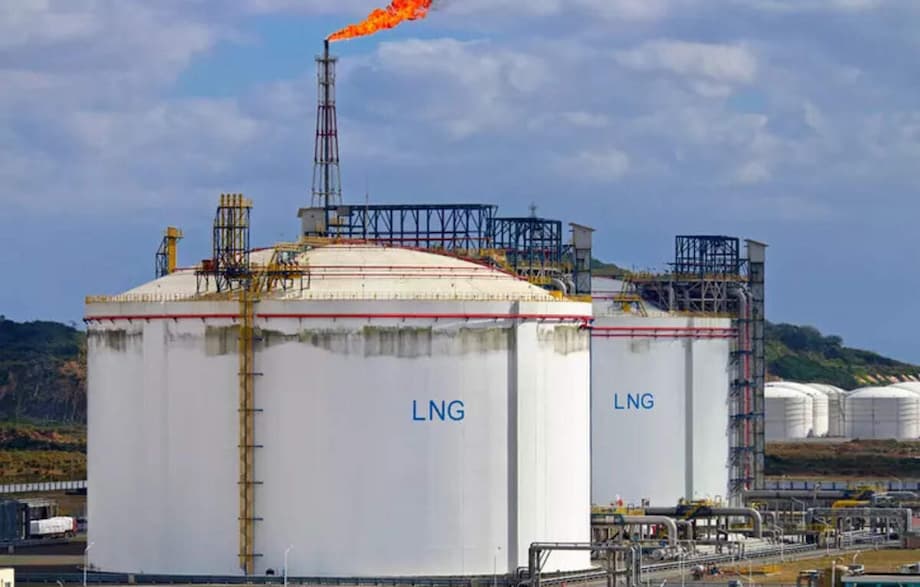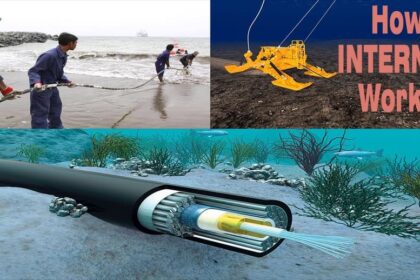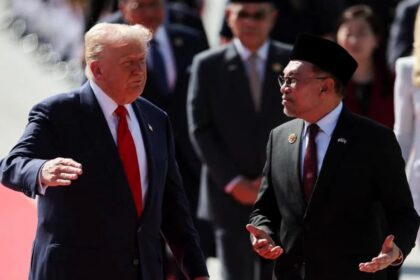Asian Nations Turn to US LNG to Ease Trump Tariff Pressure, Sparking Climate and Security Fears
Major Asian economies are signing long-term US liquefied natural gas deals to avoid steep tariffs, but experts warn this could undermine climate goals and energy security.
In 2025, a wave of new tariffs imposed by the Trump administration has pushed several Asian countries—including Japan, South Korea, Vietnam, Taiwan, Thailand, the Philippines, and India—to negotiate large-scale liquefied natural gas (LNG) import deals with the United States. These agreements are intended to ease trade tensions and avoid punishing tariffs on Asian exports, but analysts caution that this strategy could have lasting negative effects on both climate ambitions and regional energy security.
- Asian Nations Turn to US LNG to Ease Trump Tariff Pressure, Sparking Climate and Security Fears
- Why Are Asian Countries Buying More US LNG?
- Climate Concerns: Are LNG Deals Undermining Clean Energy Progress?
- Economic and Security Risks of Long-Term LNG Commitments
- How Trump’s Tariffs Are Reshaping Global Energy and Climate Policy
- Case Study: The Alaska LNG Project and Asian Partnerships
- Broader Economic and Geopolitical Context
- What Are the Alternatives? The Case for Renewables
- What to Know
The shift comes as President Trump’s administration uses tariffs and trade leverage to promote US fossil fuel exports, especially LNG, as a central feature of new trade agreements. While these deals may offer short-term economic relief for Asian exporters, they risk locking countries into decades of fossil fuel dependence at a time when the world is racing to transition to cleaner energy sources.
Why Are Asian Countries Buying More US LNG?
President Trump’s sweeping tariffs—culminating in the so-called “Liberation Day” tariffs of April 2025—have targeted dozens of countries, with Asian economies facing some of the highest rates. The administration’s stated goal is to reduce the US trade deficit and bring manufacturing jobs back to America, but the tariffs have also become a bargaining chip in trade negotiations.
To avoid or reduce these tariffs, Asian governments have offered to buy more US LNG as a concession. LNG, or liquefied natural gas, is natural gas cooled to a liquid for easier storage and shipping. It is used for electricity generation, industrial processes, and residential heating and cooking. The US, now one of the world’s top LNG exporters, has made expanding these exports a key part of its trade strategy.
Recent examples include:
- Japan’s JERA, the country’s largest power generator, signed 20-year contracts to buy up to 5.5 million metric tons of US LNG annually starting around 2030.
- Vietnam signed a deal in May with an American company to develop a gas import hub, with the Prime Minister emphasizing the need for more LNG imports.
- South Korea discussed cooperation on a $44 billion Alaska LNG project, with officials visiting the site in June.
- Taiwan’s CPC Corp. signed a letter of intent to buy LNG from the Alaska project and invest in its development.
- Thailand and the Philippines have shown interest in long-term US LNG deals and the Alaska project.
- India is considering scrapping import taxes on US energy shipments to help narrow its trade surplus with Washington and has issued tenders for US LNG.
These deals are often framed as win-win: Asian countries avoid tariffs, while the US boosts its energy exports. However, the reality is more complex.
Climate Concerns: Are LNG Deals Undermining Clean Energy Progress?
Many Asian countries have set ambitious climate targets, aiming to reduce greenhouse gas emissions and expand renewable energy. Experts warn that locking into long-term LNG contracts could slow or even reverse progress toward these goals.
Indra Overland, head of the Center for Energy Research at the Norwegian Institute of International Affairs, explained that building pipelines, import terminals, and gas-fired power plants creates expensive infrastructure that is difficult to replace. This can make it harder for countries to switch to renewables like solar and wind, which are becoming cheaper and faster to deploy.
“Locking into long-term LNG deals could leave countries with outdated infrastructure as the world shifts rapidly toward cleaner energy sources,” Overland said. “You’re more likely then to get stuck for longer.”
LNG does burn cleaner than coal, emitting less carbon dioxide and air pollution. However, it is still a fossil fuel that contributes to climate change. Methane leaks during extraction and transport can further increase its climate impact. The Trump administration has rolled back requirements for LNG exporters to monitor and report methane emissions, weakening oversight and accountability.
Many LNG contracts include “take-or-pay” clauses, obliging governments to pay for gas even if they no longer need it. Christopher Doleman of the Institute for Energy Economics and Financial Analysis warned that if renewable energy grows quickly and reduces demand for LNG, countries could be stuck paying for fuel they do not use. Pakistan’s recent experience illustrates this risk: as LNG prices soared, electricity costs rose, prompting consumers to install rooftop solar panels. With demand dropping, Pakistan has had to defer LNG shipments and try to resell excess fuel.
Trump’s broader energy policy has also shifted US priorities away from renewables. His administration has rolled back clean energy initiatives, phased out green subsidies, and promoted fossil fuel exports as a cornerstone of economic and trade policy. Experts warn that this could slow innovation, raise consumer prices, and undermine global efforts to fight climate change.
Economic and Security Risks of Long-Term LNG Commitments
While LNG imports can help diversify energy supplies, analysts caution that relying heavily on US gas carries significant risks for Asian countries.
1. Economic Viability
Many experts question whether US LNG can compete with cheaper coal and renewables in Asia. The Alaska LNG project, for example, is widely considered uneconomic. For US gas to be competitive, its price would need to fall to less than half its current level. Tariffs on Chinese steel could make building pipelines and terminals even more expensive, while delays in gas turbine manufacturing mean new projects may not come online until 2032.
Meanwhile, a global glut in LNG is pushing prices lower, making it harder for countries to justify locking into long-term deals at today’s higher prices. Even if Asian countries agree to buy more US LNG, the volumes required to meaningfully reduce the US trade deficit are enormous. South Korea would need to import 121 million metric tons of LNG in a year—50 percent more than the total amount the US exported globally last year and triple what South Korea imported. Vietnam would need to import 181 million metric tons annually, more than double the US’s total exports.
2. Energy Security
Energy security depends on reliable, affordable supplies. Relying on US LNG introduces new uncertainties. Indra Overland noted, “The US is not a very predictable entity. To rely on energy from there is a risky proposition.”
Recent global events have shown how quickly LNG cargoes can be redirected in response to market shifts. During Russia’s invasion of Ukraine, LNG shipments originally destined for Asia were rerouted to Europe, where buyers were willing to pay higher prices. Despite having contracts, countries like Bangladesh and Sri Lanka were outbid and left without fuel. Dario Kenner of Zero Carbon Analytics pointed out, “Events in Europe, which can seem very far away, can have an impact on availability and prices in Asia.”
Building more renewable energy could improve both energy security and climate outcomes. Only about 1 percent of Southeast Asia’s solar and wind potential is currently being used, leaving vast room for expansion. Renewables are immune to global price shocks and can be deployed rapidly to meet rising electricity demand.
How Trump’s Tariffs Are Reshaping Global Energy and Climate Policy
The Trump administration’s aggressive use of tariffs is not just about trade—it is also reshaping global energy and climate policy. Trade deals now often include requirements that partners buy large amounts of US oil and gas. The administration has threatened tariffs, visa restrictions, and port fees for countries that support global agreements to cut greenhouse gas emissions from shipping.
According to The New York Times, Trump’s pressure on other countries to buy US fossil fuels and retreat from clean energy pledges is causing alarm among scientists and European officials. They warn that the world needs to rapidly transition away from fossil fuels to avoid the worst impacts of climate change. The Trump administration, however, argues that economic and national security must come first, even if it means slowing climate action.
Tariffs are also disrupting the global trade in clean technologies. Higher costs for steel, aluminum, and other materials make it more expensive to build wind turbines, electric vehicles, and solar panels. This could slow the spread of clean energy and make it harder for countries to meet their climate targets. The US is heavily reliant on imports for many critical minerals needed for clean tech, and trade tensions are increasing the risk of supply chain disruptions.
Some experts see a possible silver lining: tariffs may slow the expansion of US LNG exports by making them less competitive. However, the overall effect is to raise costs, create uncertainty, and make it harder for countries to invest in the clean energy transition.
Case Study: The Alaska LNG Project and Asian Partnerships
The $44 billion Alaska LNG project has become a focal point for US-Asia energy cooperation. The project aims to build an 800-mile pipeline from Alaska’s North Slope to a liquefaction plant at Nikiski, with the goal of exporting gas to Asia while bypassing the Panama Canal. President Trump has promoted the project as a way to supply Asian markets and create American jobs.
Several Asian countries have expressed interest:
- Taiwan’s CPC Corp. signed a letter of intent to buy LNG from the project and invest in its development. Alaska Governor Mike Dunleavy and Taiwan’s Minister of Economic Affairs attended the signing in Taipei.
- Japan and South Korea have also shown interest, with ongoing talks about potential investments and supply agreements.
- Thailand has offered to commit to a long-term deal for American fuel and is interested in the Alaska pipeline.
Despite these high-profile announcements, the project faces major hurdles. The Federal Energy Regulatory Commission approved it in 2020, but construction has not started. Industry experts question its economic sustainability, given competition from cheaper coal and renewables in Asia. Tariffs on Chinese steel could further raise costs, and previous lease auctions for oil and gas drilling in Alaska have drawn little industry interest.
Environmental concerns are also significant. The project would open up new areas for drilling, including parts of the Arctic National Wildlife Refuge (ANWR) and the National Petroleum Reserve Alaska (NPRA). These moves have been controversial, with environmental groups and Indigenous communities opposing drilling due to its impact on wildlife and traditional lands.
Broader Economic and Geopolitical Context
The LNG deals are part of a broader realignment of US-Asia economic relations. At the August 2025 summit between South Korean President Lee Jae-myung and President Trump, Korea agreed to invest $350 billion in the US and purchase $100 billion in US energy products. Similar deals have been struck with Japan and the European Union. In return, the US has reduced some tariffs, though rates remain higher than under previous trade agreements.
These partnerships are intended to strengthen economic and security ties, but they also reflect the growing use of energy as a tool of geopolitical influence. For countries like India, increasing US LNG imports is seen as a way to diversify energy sources and reduce dependence on rivals like Russia and China. The US, for its part, is leveraging its energy exports to reinforce alliances and counterbalance China’s influence in the region.
However, the focus on fossil fuels over renewables could leave Asian economies vulnerable to future price shocks, stranded assets, and missed opportunities in the rapidly growing clean energy sector. As Wayne Gray, an economics professor, warned, US companies risk falling behind global competitors in clean energy innovation if current policies persist.
What Are the Alternatives? The Case for Renewables
Despite the current push for LNG, experts emphasize that Asian countries have genuine alternatives. Southeast Asia, for example, is using only about 1 percent of its solar and wind potential. Expanding renewables could meet rising electricity demand, reduce emissions, and improve energy security by insulating countries from global fossil fuel price swings.
Renewables can be deployed quickly and at scale. They are not subject to the same geopolitical risks as imported fossil fuels. As Jon Elkind of the Center on Global Energy Policy noted, “All technologies, especially wind, solar, and batteries, are needed to meet growing electricity demand.”
Some Asian governments and private companies are already investing in clean energy, even as official policy shifts toward LNG. For example, Ford and other firms continue to develop electric vehicles and renewable energy projects despite reduced government support. The challenge is to ensure that long-term LNG contracts do not crowd out these investments or create barriers to future clean energy growth.
What to Know
- Asian countries are signing long-term US LNG deals to avoid steep tariffs imposed by the Trump administration.
- Experts warn these deals could slow the transition to renewable energy and undermine climate targets.
- Long-term LNG contracts risk locking countries into fossil fuel dependence and creating expensive, hard-to-replace infrastructure.
- US LNG may not be economically competitive with cheaper coal and renewables in Asia, raising concerns about stranded assets.
- Energy security is at risk, as reliance on US LNG exposes countries to global market volatility and supply disruptions.
- Trump’s tariffs are also making clean technologies more expensive, potentially slowing global climate progress.
- Expanding renewables remains a viable and potentially more secure alternative for meeting Asia’s growing energy needs.












